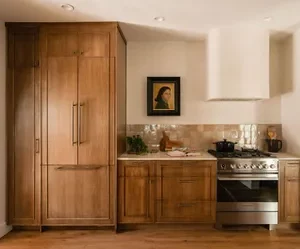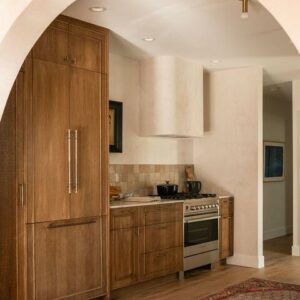I’d like to recreate the beading on these white oak cabinets. Does anyone know the name of this style or how I might approach it. I think it might be a combination of cockbeading with something else. Thanks!
Discussion Forum
Get It All!
UNLIMITED Membership is like taking a master class in woodworking for less than $10 a month.
Start Your Free TrialCategories
Discussion Forum
Digital Plans Library
Member exclusive! – Plans for everyone – from beginners to experts – right at your fingertips.
Highlights
-
Shape Your Skills
when you sign up for our emails
This site is protected by reCAPTCHA and the Google Privacy Policy and Terms of Service apply. -
 Shop Talk Live Podcast
Shop Talk Live Podcast -
 Our favorite articles and videos
Our favorite articles and videos -
E-Learning Courses from Fine Woodworking
-
-
 Fine Woodworking New England Event
Fine Woodworking New England Event -














Replies
If those are commercial cabinets the door style/name has little bearing outside of the manufacturers catalog and I don't recognize them as any generally recognized furniture style.
As far as construction, again if they are commercial cabinets they are most likely just two applied moldings a half round on the interior and a rabbetted bull nose molding around the perimeter with mitered corners.
Agreeing with esch - never seen this style before. It has a bit of a Mid Century Modern vibe going on - I have seen such with applied beading as described.
I would consider cock-beading to be inscribed into the door face, whilst this looks to have been applied. I suspect it is fancy edgebanding as the faces are almost certainly plywood, albeit jointed rather than rotary cut veneers.
Take a look at this video by Tom McLaughlin for cock beading. It is a drawer but same process.
https://www.youtube.com/watch?v=QSS4-MVBNLs&t=4790s
Thanks. I think esch nailed it with the moldings. And I think rob is right about it being plywood. For the edges of the faces that don't have the molding, do you think hot melt veneer edge banding would hold up to kitchen use? A strip of hardwood on the edge would have the grain running perpendicular and might throw off the look. Thoughts?
Commercial manufacturers would use a heat set veneer on the edges, but in a small shop the trick is getting the heat right and consistent pressure especially at the edges. Done properly it should be fine,but solid wood T-molding would be more durable and consistent but also more noticeable in cross grain applications.
Edge banding is ok but....eventually high use doors it wants to detach. That's been my experience, anyway.
If you have the tools/skills, I would mill up some 1/4" stock, round over one edge, cut miters and apply it as an edge banding. A little more involved is they are inset.
Have a look behind door #3:
https://www.finewoodworking.com/2002/06/01/six-ways-to-edge-plywood
When you apply mouldings to a 3/4" drawer face in a kitchen, what would be a suitable gauge nail. Would you recommend a 18 gauge brad nail (and just fill the hole)? I think my pinless 23 gauge would be too weak without wood glue which would lead to difficult removal of squeeze out.